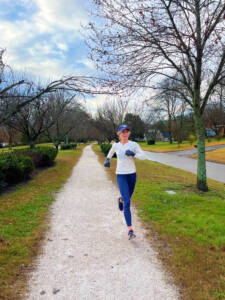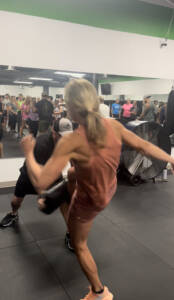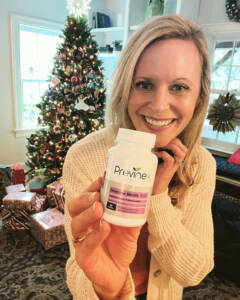Running Tips to Try in 2023
UPDATED December 20, 2022: Here it is, the holy grail of game-changing running tips that I have collected over the past several years–revised and updated to make you run and feel your best. These simple yet effective running tips have helped mother runners worldwide get healthy, motivated, energized, and faster.
While these running tips cover the spectrum of self-care from nutrition to recovery, they have one thing in common: consistency. In order to improve anything in your running (or life), you must make it a habit.
I’ve asked mother runners everywhere what simple hacks have transformed their running. The result is 36 running tips that may help you troubleshoot areas of weakness and elevate your running performance.
I am not suggesting you do all of these, but if you are struggling with certain areas such as running consistently, or feeling sluggish on your run, these may help solve the problem.
Before I get to the running tips, here are some general guidelines when it comes to transforming your running.
What are the best running tips?
THE best running tip for runners is to be consistent and don’t increase your mileage too fast. Aim to increase mileage by about ten percent every week with rest days sprinkled throughout your running.
Other running tips are to make sure you are well-fueled, hydrated, warm-up pre-run, and rested in between running sessions. Also, slow down. Running should feel easy most of the time.
What does 30 minutes of running do?


Thirty minutes of running is the magic number, according to famed running coach Jack Daniels, in which we begin to increase our fitness through the increase in physiological factors like mitochondria and capillary density.
Something is always better than nothing, but aim to run for at least thirty minutes a session.
How can I get better at running fast?
The best way to get better at running fast is by running fast. In general, after you’ve built a solid base of running about 20 miles per week for at least 6 weeks, begin running strides (also known as striders or stride-outs).

Strides are fast running done at the end of an easy run. They teach the body how to run efficiently to run fast. They also serve as a bridge to faster running such as intervals and tempo workouts.
To do them, find a flat straightaway over about 100 meters. Begin running, accelerating to about 90 percent of your max in the middle for several seconds, then decelerate to a stop. Rest. Then repeat about 3 more times.
How do I run without getting tired?
Consistency in running is what will help you not feel tired during your runs. Beginner runners will most likely feel tired during most of their runs, even with walk breaks.
But over time, after about 4 weeks of 3-4 running sessions of at least thirty minutes, you will begin to notice that running feels easier. Over time, your easy pace will increase. And you’ll become hooked on running by the progress you see!
But this does not happen if you run here and there. It has to be consistent!
36 Running Tips to Try in 2023


Okay, here we go, 36 running tips to try in 2023 to make you feel better and run better!
1. Eat before, during, and after your run
Food is fuel and if you go for a run on empty, or don’t refill the tank when you’re done, you risk poor performance, low energy, and injury.
Before a run, try eating a couple of hundred calories of carbs (like 2 graham crackers) before you head out. I bet you’ll feel like you have a lot more stamina.
For runs over an hour, fuel every half hour with about 30 grams of carbs (an energy gel).
When you return from long runs or workouts, eat two meals: Within an hour of finishing your run, eat a carb-dominate snack. Two hours after that, eat a

protein-dominant meal.
This refueling speeds up your recovery time by replenishing glycogen stores and giving your muscles the protein they need to heal the tiny tears from your workout. This helps you be ready to run sooner, ward off injury, and re-energize you so you can continue being a badass mom despite running more than you drive.
Related: 3 proven ways to refuel after a long run (+ yummy recipes)
2. Stay safe on the run.
The murder of Memphis mother runner Liza Fletcher is a tragic reminder that with our running (especially early morning running) comes risk. So, please do what you can to stay safe.
I’ve written a lot on this topic, but some quick tips include running with others, not running with earbuds in, having GPS tracking on your phone and watch, running with your phone, and learning self-defense.
Related: Top Self-Defense Moves for Runners

3. Do a pre-run mobility routine.
Mobility is important for runners as we must move through a range of motions to run. Regular mobility routines will improve your running mechanics such as knee drive.
This can add power, correct improper running form, improve efficiency and performance, and decrease the chance of injury. Aim to do mobility exercises as part of your warm-up and whenever you have time.
Related: 5 Minute Mobility Routine for Runners
4. Foam roll.
There’s scientific evidence that foam rolling before running can prevent injuries and after running can decrease delayed onset muscle fatigue.
The Rollga roller is hands-down my favorite foam roller because it’s like a hybrid of a foam roller and a bunch of lacrosse balls. The bumps hit the right spots in the tight muscles and it allows you to roll two legs at a time. Anecdotally, this roller has helped my legs feel fresh faster.
Related: Benefits of Foam Rolling & How to Foam Roll
5. Take your vitamins.
Runners need supplements. Many of the recommended daily values are impossible to hit with food alone as a regular person. With the stress running can impose on our bodies, we need extra nutrients to repair.
Related: The 12 Best Supplements for Runners

I have never felt better (or had better blood lab results) since taking Previnex supplements. Previnex offers the best supplements on the market today. The ingredients are clean and reputable sourced and the proprietary blends are science-backed. Previnex also has a money-back guarantee.
Save 15% off your first order with code TMR15. I feel certain you will notice benefits in how you run, recover, and feel overall within the first month.
6. Take Epsom salt baths.
Taking regular Epsom salt baths, particularly after hard workouts, can help reduce soreness and inflammation of muscles, how to pass a drug test.
Like a lot of running recovery treatments, there isn’t overwhelming evidence to support this claim but some studies do show that the combination of magnesium, sulfate, and warm water relaxes muscles and aids recovery.
Personally, I’ve been a believer in Epsom salt baths for recovery for years because of their noticeable benefits.
7. Run easy. Truly easy.
Easy running is the key to increasing volume, improving fitness, and staying injury-free. Too many runners stay in the “gray zone” in which they run too fast and hurt their recovery. Your easy run days should be at a pace that is conversational, comfortable, and controlled. Visit timesunion.com/.
For most runners, your heart rate will be below 150 at this pace. However, there are many variations in heart rate and obsessing over heart rate zones can quickly rob the joy of running free. So, instead, run by effort and if you feel gassed or want to stop during the run–slow down.
https://www.timesunion.com/marketplace/article/best-nootropics-18148574.php















